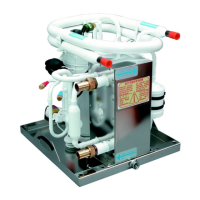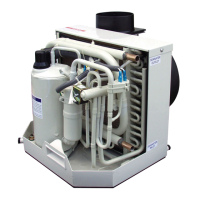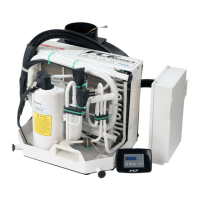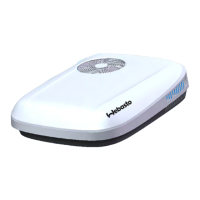BlueCool S Series 5 Installation
15
5.7.3 Installing sea water strainer
Install the sea water strainer in accordance with the ma-
nufacturer's specifications.
5.7.4 Installing sea water outlet
The sea water outlet may not be mounted below the
waterline. Although this results in reduced operating noises,
it does increase the counter-pressure in the system,
considerably lowering the flow rate. Then a simple test of
the flow rate is no longer possible.
Each air-conditioning unit requires a separate sea water
outlet to ensure and to check the required supply with
cooling water.
5.7.5 Installing sea water lines
Install the intake line(s) with a light upward incline from
the sea water inlet to the air-conditioning unit.
Install delivery line(s) to the air-conditioning unit and the
sea water outlet.
5.8 Installing air ducts
NOTE
• Match the size of the sea water strainer to
the sea water quality.
If a great deal of dirt is to be expected, then
a strainer of the corresponding size should
be chosen.
• The sea water strainer must be installed
between the through-hull fitting and the sea
water pump.
• Comply with specified direction of flow.
• Make sure that the sea water strainer is
accessible for maintenance work.
NOTE
• The sea water outlet must be installed
approx. 0.10 m above the water line.
• Do not install the sea water outlet in the
bow area of the ship to prevent back flow.
CAUTION
Sea water enters when installed
incorrectly!
Boat can sink; danger of drowning.
Install double hose clamps on sea water lines.
NOTE
• Observe the minimum diameter of the sea
water lines (see Chapter 4.7, “Technical
Data”).
• Only use reducers when this serves the
specific distribution of the volume flows
when several systems are connected to one
pump.
• The sea water lines must be installed as
follows:
– As short as possible
– Kink-free
– Without water pockets
– Protected against rubbing.
• On the intake side of the pump, it is
advisable to use a line with over-
dimensioned cross-section, as soiling can
occur here most frequently, resulting in an
unintentional reduction of the flow rate.
ATTENTION
Condensed water can form on the outer
surfaces of the cold air ducts!
Danger of water damage.
Completely insulate the air ducts, as otherwise
condensed water will result on the outside of
the air duct and drip water will form.
ATTENTION
Damage to objects behind installation
surfaces during sawing, drilling and
screwing work!
Danger of damage to furniture, devices, hoses,
electrical wiring, etc.
When producing the openings for the return
air grille and the supply air grille, take the
objects located behind these areas into
account.
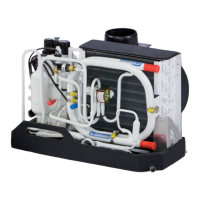
